Heeeyho Readers! Let's talk about fishing rods!
"Give a man a fish, and you feed him for a day. Teach a man to fish, and you feed him for a lifetime".
Dad started in recreational fishing, with proper equipment, in the early 80's. I first held a fishing rod in the mid 90's and participated a lot in fishing competitions around 2000. Together, we've accumulated knowledge and equipment. What dad and I gathered during these years illustrates some forty years of fishing gear evolution — for Brazil's standards, at least.
Today I'd like to talk about the evolution of fishing rods. This isn't a historical thesis, but a post to show how I experienced the evolution in materials throughout the years.

When dad started fishing in the early 80's, buying proper recreational fishing equipment was a quasi punitive ordeal. Due to a lengthily period of closed and regulated imports in Brazil during the 1970's and a following inflation crisis in the 1980's, buying anything was expensive — having a fiberglass "american" rod was a luxury, when most fisherman used long bamboo rods made at home.
Dad's first rod (~1980) was made of solid fibergrass, with a beautiful wooden handle and metal reel seat.
Confused with the nomemclature? Check this image.
Let's see how our rods evolved when it comes to reel seating.
Reel Seating
The reel seat is where you attach the fishing reel to the rod. Before we used threaded systems, the most common accessory was a tackle plate (now shown here). Below you will see two different rod sets with metal reel seats (80's and late 90's). These work great, but are heavy and tend to oxidize.
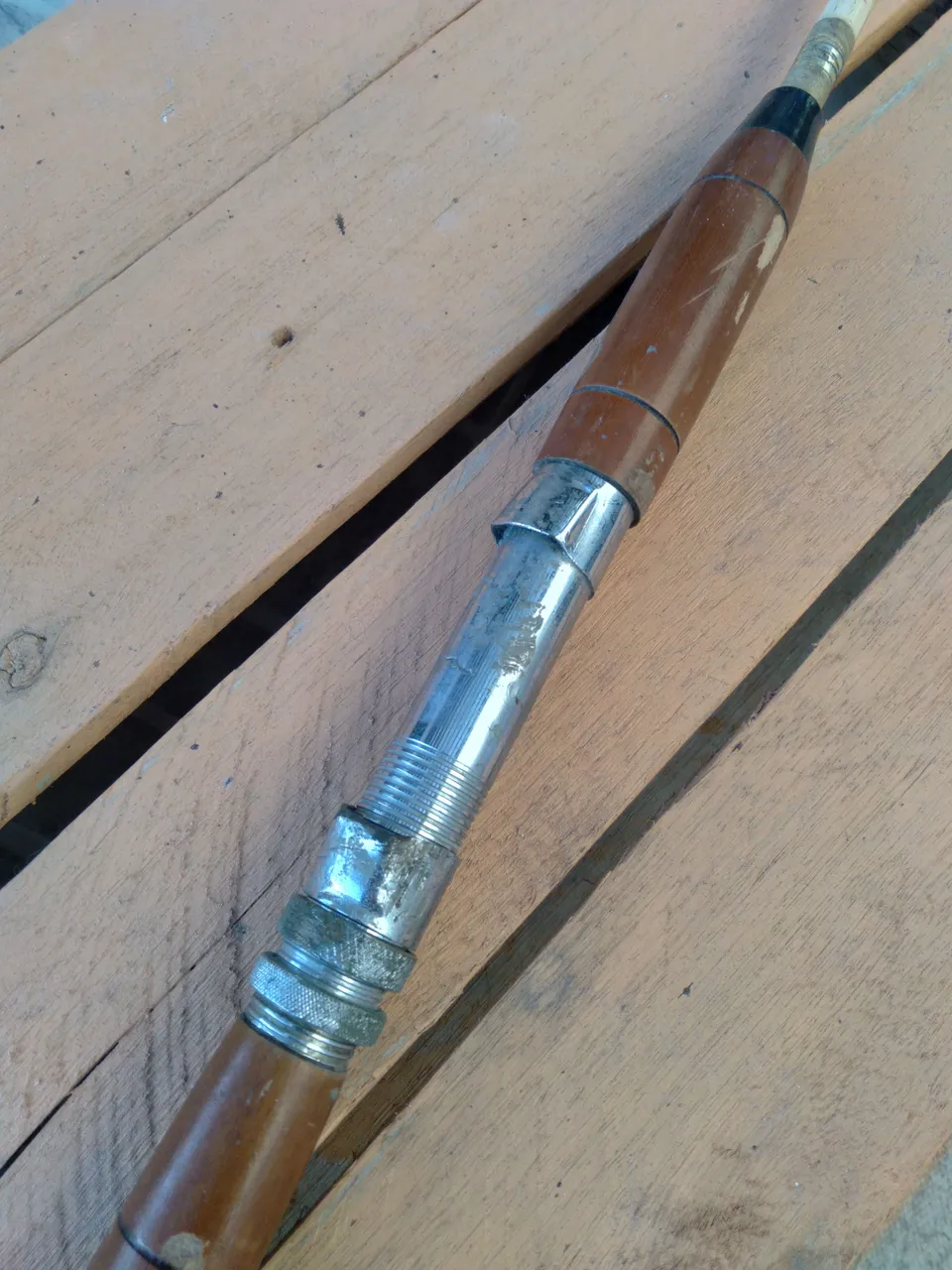
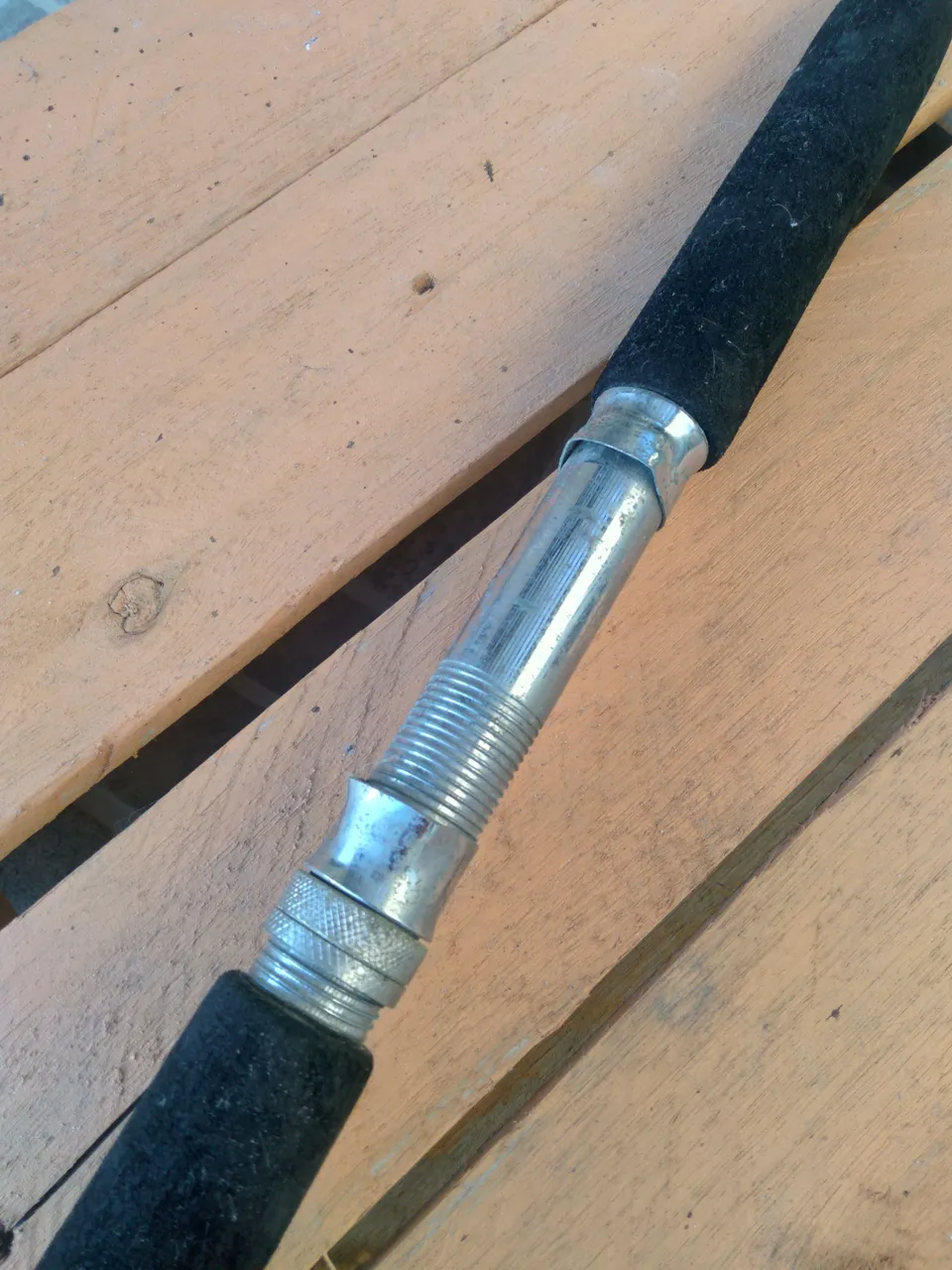
Metal reel seats are rare today; all rods come with plastic parts. Plastic is lighter, easier to clean, doesn't oxidize, and it's a lot cheaper to produce. See below two different threaded reel seats: one heavy duty rod for sea fishing and a super lightweight meant for baitcasting. We can see quite an evolution in finishing from the first two rod sets to these two late 2020's ones.
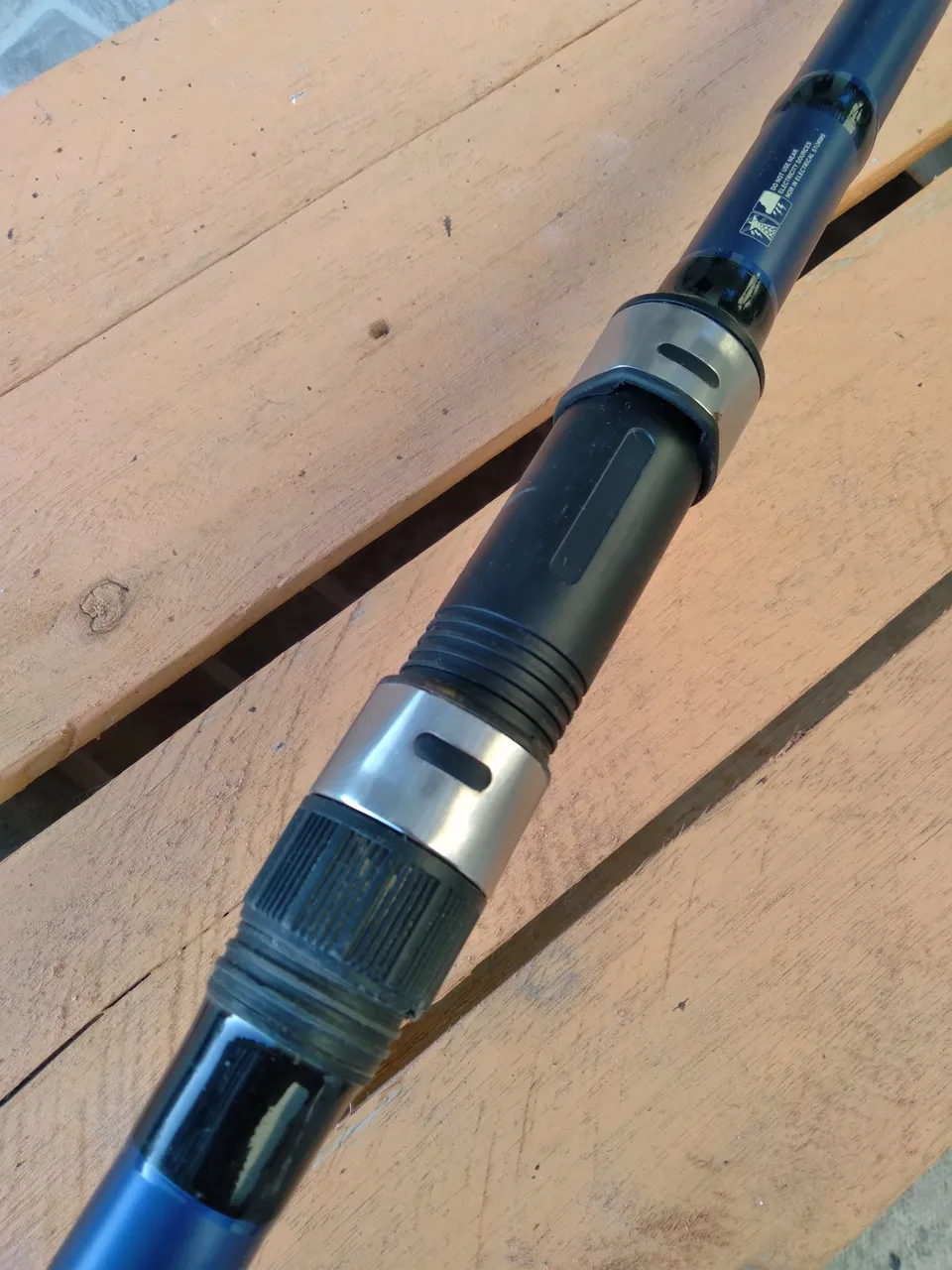
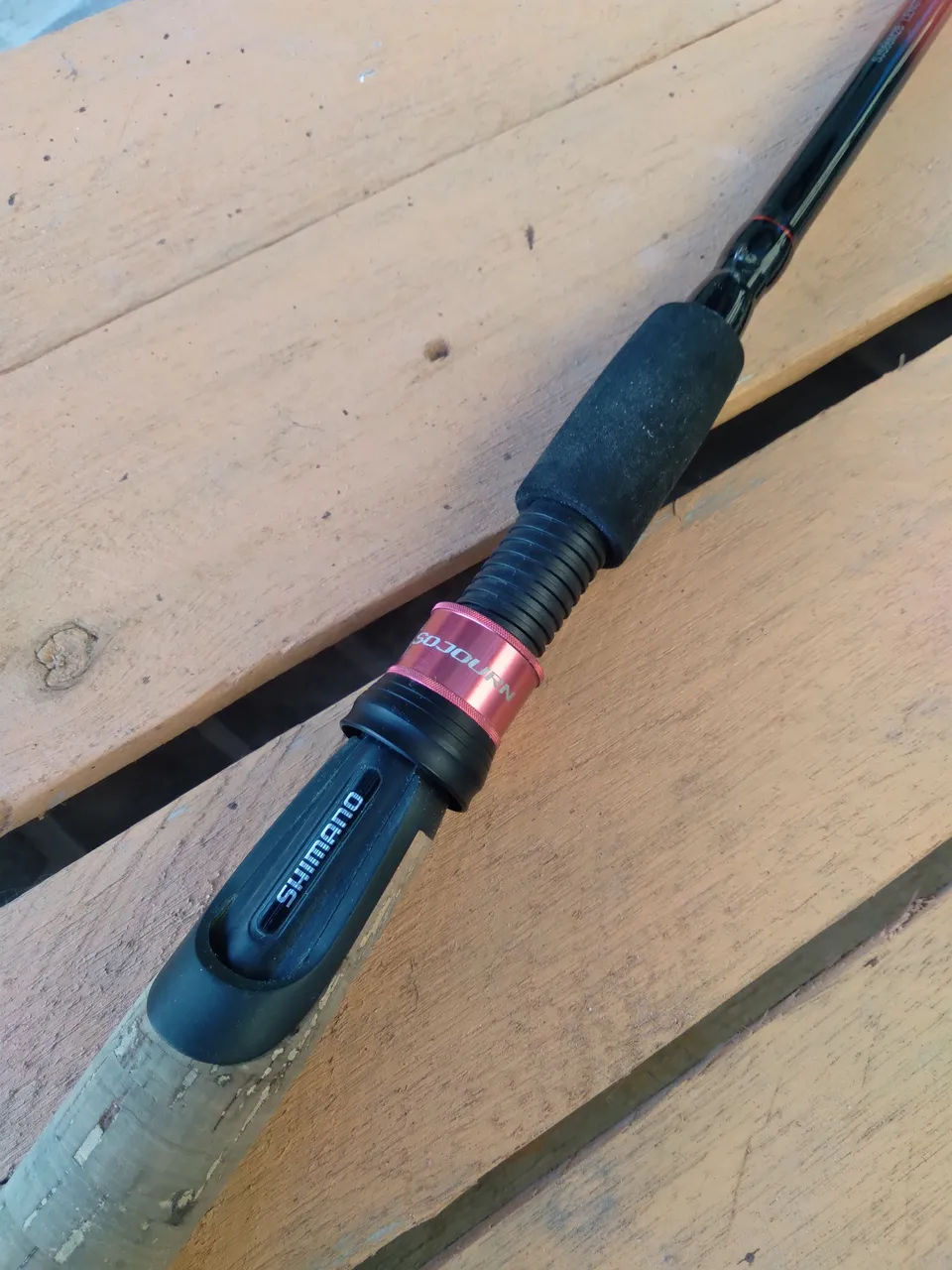
Blank Materials
A fishing rod blank is the actual pole without the acessories (guides, reel seat, handles, etc). The evolution of our fishing rod sets is most notable in terms of pole materials. Older rods are made of thick fiberglass filled with resin; whereas later ones come in super lightweight hollow carbon fiber. The weight difference is brutal.
From left to right there's two solid resin and fiberglass rod sets (1980 and late 90's); one hollow fiberglass (~2010); and two modern hollow carbon fiber (2020 and 2021).
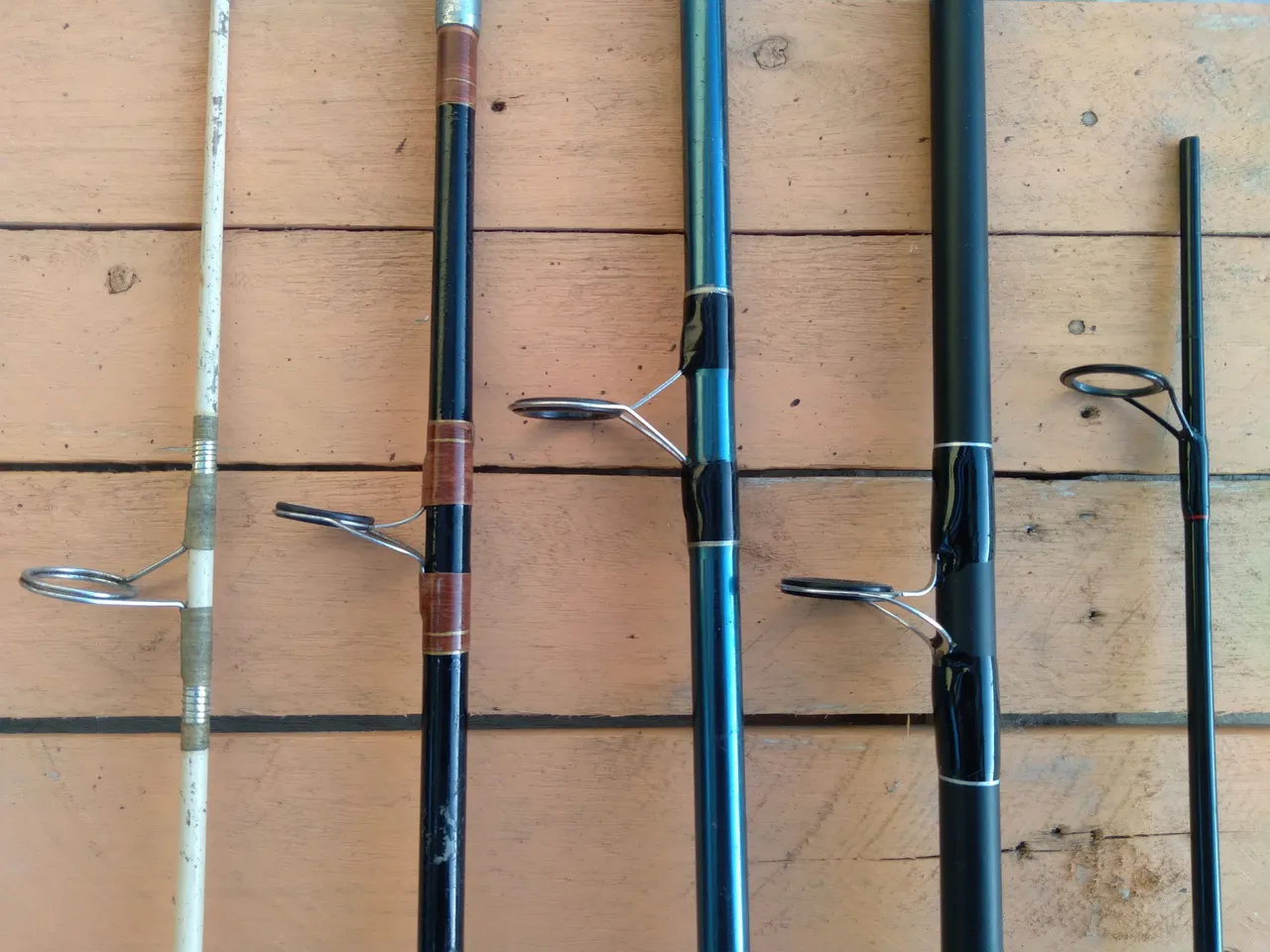
Guides and finishing
Rod guides have also come a long way. Our first fishing rod is equipped with a simple stainless guide wrapped using an uncoated silk line — it looks nice and vintage, but hasn't got the best friction and weight. Then, came in cheap ceramic guides and more recently aluminum oxide inserts that offer less friction and more precision when casting.
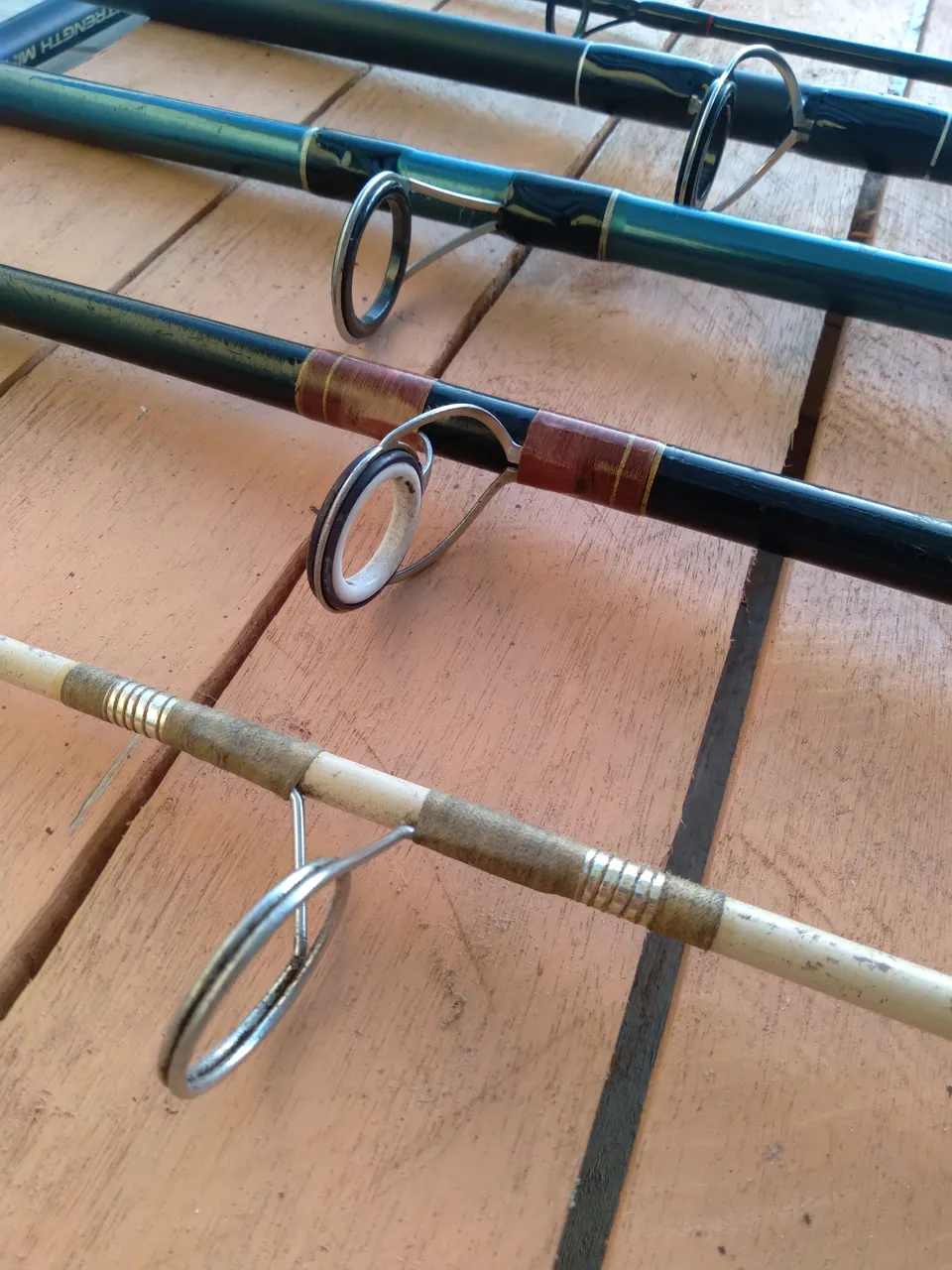
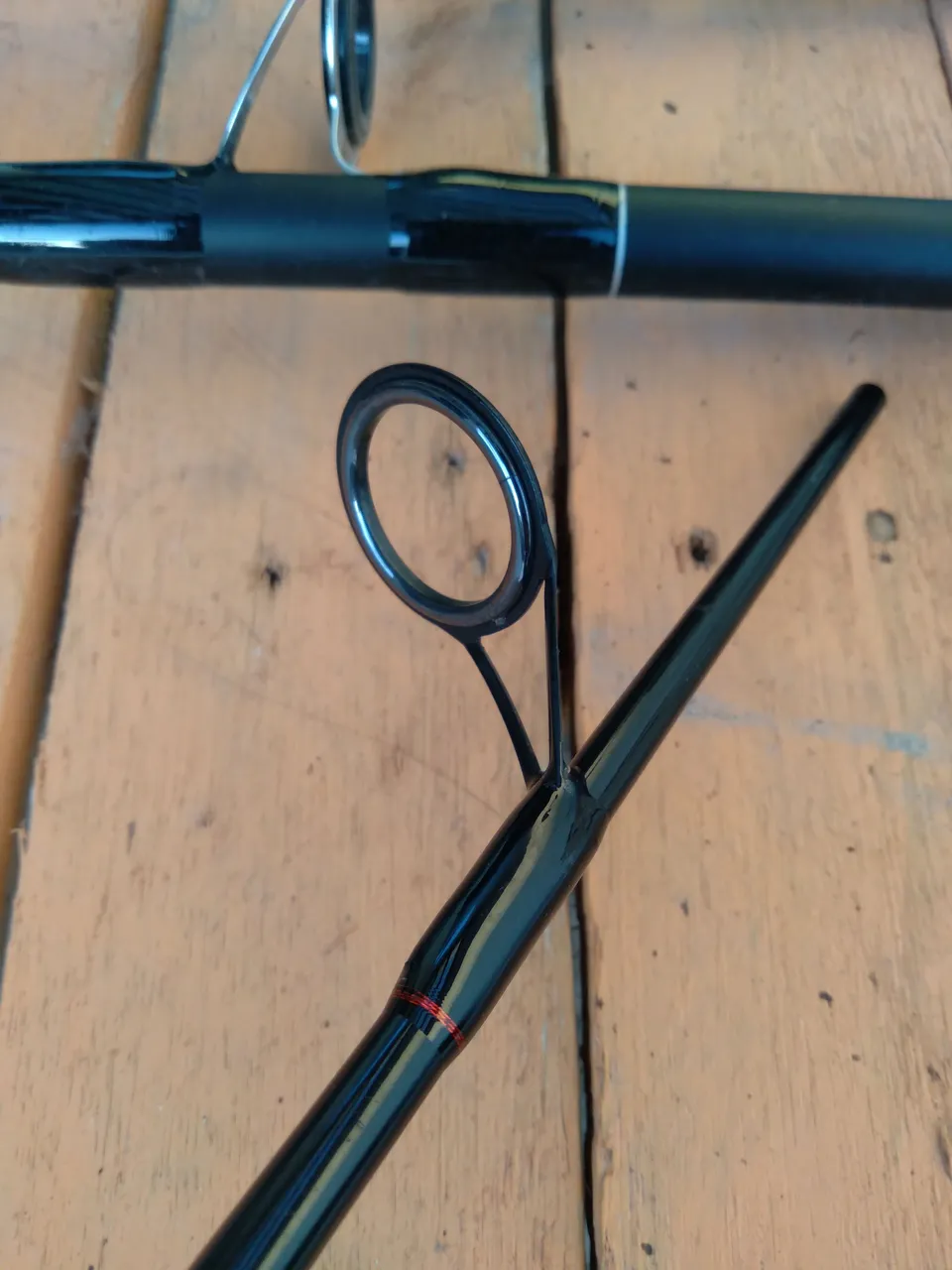
Handle
Although wooden handles are charming, they are not the lightest. Cork and EVA foam are the two most used modern materials. EVA foam handles are generally cheaper than cork; also, cork handles tend to be lighter. I personally think that, despite the differences in quality, cork looks better. If weight wasn't an issue, I'd opt for vintage wood though.
From top to bottom: Cork, EVA foam, and wood.
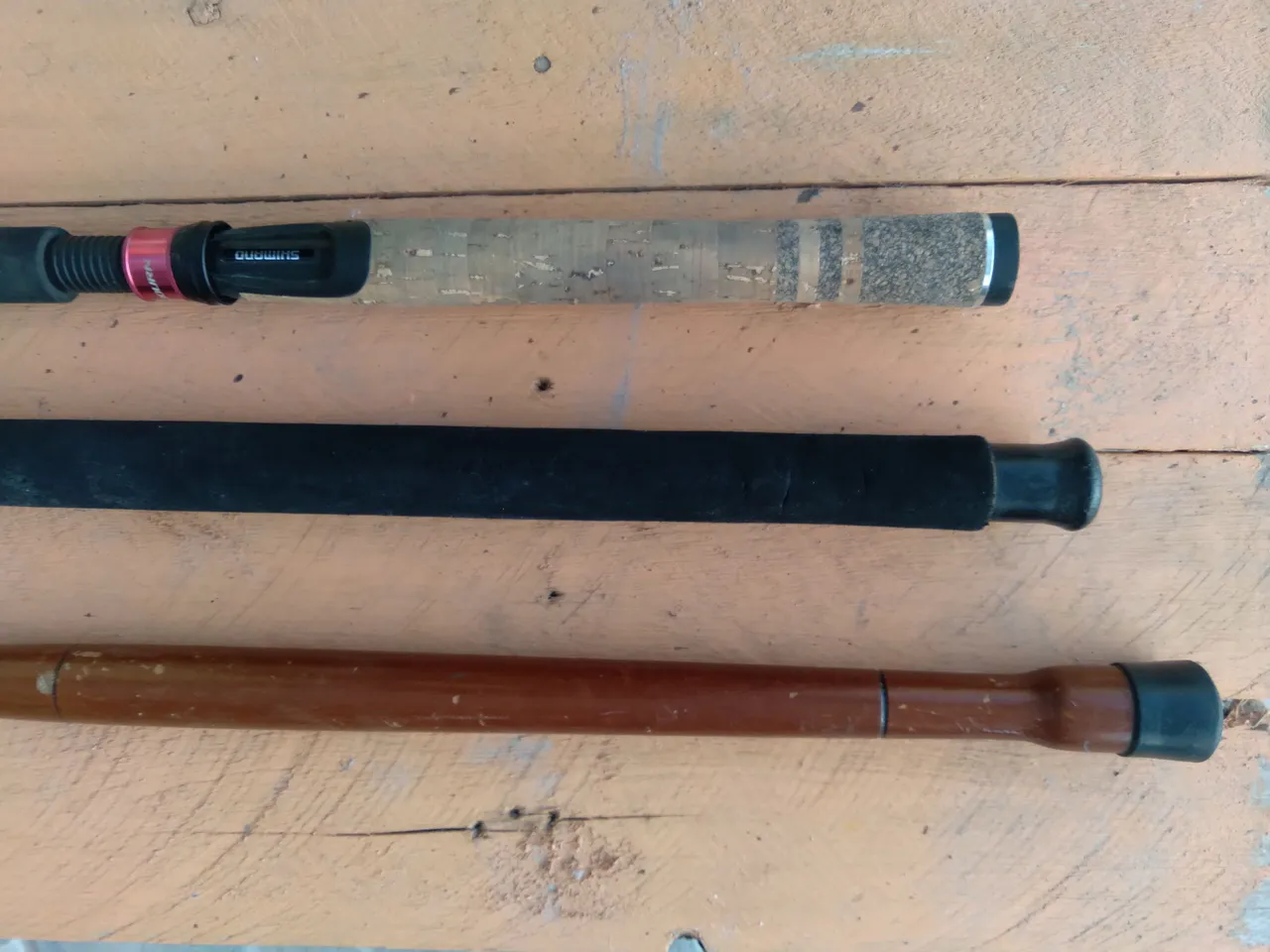
As you can see, fishing equipment have evolved substantially throughout the decades, though the practice stills the same. Most of the evolution favored weight loss, granting less fatigue after a whole day casting. There's also a noticeable evolution is rod strength: my latest carbon fiber rod can drag fish sizes that would destroy my dad's solid fiberglass rig.
In the end, what really matters is having fun outdoors while, sometimes, securing a healthy, super fresh, meal later in the day. I hope you've enjoyed learning a little bit of the history of our fishing rods.
Are you into fishing? Share in the comments what's your equipment of choice.
Peace.
Did you know that I have a book out? Check this!
Access Link: https://www.amazon.com/dp/6500272773?
If you enjoyed this post consider leaving your upvote for a hot coffee.
Find me on Twitter: https://twitter.com/mrprofessor_
~Love ya all,

Disclaimer: The author of this post is a convict broke backpacker, who has travelled more than 10.000 km hitchhiking and more than 5.000 km cycling. Following him may cause severe problems of wanderlust and inquietud. You've been warned.


